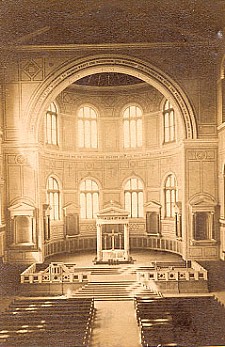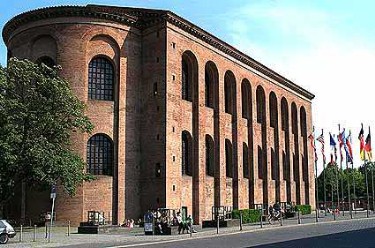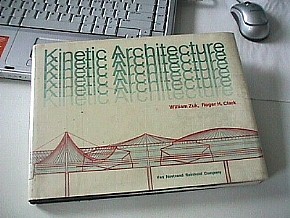2006.02.14 10:17
non-event cities
Are "events" now-a-days actually well masked advertisements?
Is "history" now-a-days a record of well masked advertisements?
Are "non-event cities" now-a-days the bulk of reality?
Is there a reality to "architect as event planner?"
2006.03.16 09:57
on Roman bath houses
Check out ancient Rome's Baths of Helena, now gone but Palladio recorded their remains. Helena was born in Drepanum, today's Yalova, Turkey, where there are still some of the best thermal baths of that region. The relation of major fault lines and thermal baths might make an interesting study.
The Imperial Baths at Augusta Treverorum, today's Trier, Germany, were the largest Roman baths outside of Rome, built under Constantine, Helena's son. Augusta Treverorum was Constantine's Imperial capital before Constantinople.
Historians are still not certain whether Constantine's second wife Fausta committed suicide or was killed in the steam room of a bath in Rome. Did this unfortunate event happen in the Baths of Helena? In any case, Constantine never returned to Rome after Fausta's death, although their daughter Constantina for sure did.
2006.03.17 11:37
non-event cities
...after I wrote a post containing the word kicky, I read Inga Saffron's "Repulsive sense of security" in this morning's Philadelphia Inquirer, which contains these sentences: "Cywinski's sedate masonry structure was designed to replace Mitchell/Giurgola's swooping 1976 bell pavilion. That kicky little building, which is scheduled for demolition starting on Monday [20 March 2006], was often criticized because it was seen as being too modern and disrespectful of Independence Hall."
2006.04.01 10:08
Complex Iconography and Contradictory Content in Architecture
It's strange to think that the double basilica of Augusta Treverorum [Trier] (circa 326-8 AD) was the first Christian basilica of northern Europe, and for many years the largest Christian church of northern Europe as well. Little remains of the original double basilica, but two large churches are still there side by side today.
My theory as to why there were two joined basilicas, to begin with, is that they were designed to accommodate the distinct Latin and Greek populations of Augusta Treverorum. I also theorize the double basilica of Augusta Treverorum as the primogenitor of the Romanesque. Eutropia was the 'architect'.
While the Shroud of Turin is well known, the Holy Coat of Trier is much lesser known. Perhaps you know the movie The Robe, however. "The Trier tradition affirms that this relic was sent to that city by the Empress St. Helena." If this tradition is true, Helena was already dead when the Holy Coat was brought to Augusta Treverorum. It was Eutropia who executed the translation of the relic.
The head of Helena, empress and saint, is also in one the double churches at Trier.
Did Eutropia ultimately die at Augusta Treverorum? Albeit a Syrian, as a western Roman Empress herself, she certainly was no stranger to the city. It is at least known that Constantine was at Augusta Treverorum 27 September 328 and 29 December 328 while on a campaign on the Rhine. Coincidentally, the end of 328 and the beginning of 329 is exactly when coins depicting Helena Augusta stopped being issued. It has long been my contention that the Helena coins ceased once Eutropia had died.
How come architecture historians have yet to make the very direct connection between Constantine's throne hall at Augusta Treverorum (306 AD) and the first Christian basilica of Rome (312 AD)? Perhaps it is only obvious to Eutropia, Helena and Constantine and those who know them as to where the "basilican" form of the Early Christian Architecture actually came from.
 
Aula Palatina, Trier, c.306 AD.
| |
2006.04.01 11:30
Why does much 'avant-garde' design these days look straight out of the Sixties?
I like the question, "What would radical be exactly?" because it's kind of indicative of how rare radicalism in architecture really is...
radical
2.Departing markedly from the usual or customary; extreme
3. Favoring or effecting fundamental or revolutionary changes in current practices, conditions, or institutions
2006.04.01 14:24
Why does much 'avant-garde' design these days look straight out of the Sixties?
...I was reminded of being in a local 1960s Roman Catholic church for the first time a few years ago. I was actually quite surprised by it's "radical-ness". I mean, it was the first time I've ever seen a completely black altar in my life. There was indeed something radical about a lot of 60s and 70s architecture.
2006.04.01 17:12
Why does much 'avant-garde' design these days look straight out of the Sixties?
A couple of years ago I specifically looked through the Progressive Architecture design awards from the late 1960s. I wanted to see what Gordon Matta-Clark probably saw himself when he was (still) in architecture school at Cornell. I was very much surprised because a lot of the top prizes were buildings that are now "in history", but not all of them. I'm not sure how this relates to the topic here, but what I saw wasn't exactly what I expected. I guess I'm trying to say that history gets more interesting when it's contextually specific. Is radical retro an option? Extreme Makeover Retro?
2006.04.04 12:11
Re: Constantine and Christians
...read the passages within Eusebius' Life of Constantine, Book III, Chapters 54-58, demolition of the shrine at Aphaca in particular. These demolitions of pagan temples are recorded immediately following the chapters about the Christian church building projects in the Holy Land and other locations in the East. I find the (historical) juxtaposition of Constantine's creative and destructive religious activities interesting--while Christianity was beginning to be 'built', paganism was starting to be 'demolished', and seemingly starting with the more homosexually oriented cults.
2006.04.04 12:51
Re: Constantine and Christians
It is perhaps wrong to say that Constantine was influenced by Helena and Eutropia when it came to Christianity, but there is no question that Constantine acted in tandem with Helena and Eutropia when it came to manifesting Christian churches. Helena's work is relatively well know here, but Eutropia's work is often ignored. Here is a letter from Constantine to Eusebius (as a bishop in Palestine), which Eusebius includes within the Life of Constantine after recording the death of Helena:
"VICTOR CONSTANTINUS, MAXIMUS AUGUSTUS, to Macarius, and the rest of the bishops in Palestine.
"One benefit, and that of no ordinary importance, has been conferred on us by my truly pious mother-in-law, in that she has made known to us by letter that abandoned folly of impious men which has hitherto escaped detection by you: so that the criminal conduct thus overlooked may now through our means obtain fitting correction and remedy, necessary though tardy. For surely it is a grave impiety indeed, that holy places should be defiled by the stain of unhallowed impurities. What then is this, dearest brethren, which, though it has eluded your sagacity, she of whom I speak was impelled by a pious sense of duty to disclose?
That the Saviour appeared in this Place to Abraham. She assures me, then, that the place which takes its name from the oak of Mambre, where we find that Abraham dwelt, is defiled by certain of the slaves of superstition in every possible way. She declares that idols which should be utterly destroyed have been erected on the site of that tree; that an altar is near the spot; and that impure sacrifices are continually performed. Now since it is evident that these practices are equally inconsistent with the character of our times, and unworthy the sanctity of the place itself, I wish your Gravities to be informed that the illustrious Count Acacius, our friend, has received instructions by letter from me, to the effect that every idol which shall be found in the place above-mentioned shall immediately be consigned to the flames; that the altar be utterly demolished; and that if any one, after this our mandate, shall be guilty of impiety of any kind in this place, he shall be visited with condign punishment. The place itself we have directed to be adorned with an unpolluted structure, I mean a church; in order that it may become a fitting place of assembly for holy men. Meantime, should any breach of these our commands occur, it should be made known to our clemency without the least delay by letters from you, that we may direct the person detected to be dealt with, as a transgressor of the law, in the severest manner.
For you are not ignorant that the Supreme God first appeared to Abraham, and conversed with him, in that place. There it was that the observance of the Divine law first began; there first the Saviour himself, with the two angels, vouchsafed to Abraham a manifestation of his presence; there God first appeared to men; there he gave promise to Abraham concerning his future seed, and straightway fulfilled that promise; there he foretold that he should be the father of a multitude of nations.
For these reasons, it seems to me right that this place should not only be kept pure through your diligence from all defilement, but restored also to its pristine sanctity; that nothing hereafter may be done there except the performance of fitting service to him who is the Almighty God, and our Saviour, and Lord of all. And this service it is incumbent on you to care for with due attention, if your Gravities be willing (and of this I feel confident) to gratify my wishes, which are especially interested in the worship of God. May he preserve you, beloved brethren!"
I think it is clearly implied that Constantine sooner trusts Eutropia than the Christian bishops, and, moreover, Eutropia provided Constantine with a further occasion to demonstrate his superiority over the bishops. What is unfortunate is that modern scholars cannot accept that Eutropia was still alive and still on good terms with Constantine after the deaths of Helena and (of course) Fausta.
I've said it here before, and I'll say it again: a lot of the conundrums of Helena cleared up once I stopped ignoring Eutropia.
To me, Constantine was a soldier first, a politician second and a Christian third. Helena, I see, as a great historical player, a great survivor and a great doer. And, I see Eutropia, because of her long Imperial life and vast experiences, as the person closest to Constantine who knew 'everything'--she knew the Empire and its many places and how it all worked (literally and symbolically), and she probably knew who owned what.
| |
2006.05.21 17:42
reading KINETIC ARCHITECTURE lately?

Anyone else reading
William Zuk and Roger H. Clark, Kinetic Architecture (New York: Van Nostrand Reinhold Company, 1970)
lately?
From the front flat of the dust jacket:
"Surely our present task is to unfreeze architecture--to make it a fluid, vibrating, changable backdrop for the varied and constantly changing modes of life. An expanding, contracting, pulsating, changing architecture would reflect life as it is today and therefore be part of it"*
Kinetic Architecture captures the very essence of the above statement. But more than that, it gives every architect, engineer, city planner and builder a working knowledge of emerging, evolutionary concepts and ideas which are flexible to the speed, scale, and nature of change today.
Fully evaluating the bold and exciting potentials of architecture which can accommodate time-change effects, the authors provide a wealth of supporting examples which show how man can now, for the first time, construct a physical environment that is adaptable to his specific needs.
Denouncing the "monument syndrome of static, permanent architecture" in light of current needs, the authors persue new architectural mediums which would remain responsive to a broad spectrum of changing conditions. Such buildings might expand, contract, or even move as pointed up in the book's numerous examples and illustrations.
Here you'll gain new insights into the principles and possibilities of dynamic self-erecting structures such as the United States Pavilion on Osaka, Japan . . . incremental structures which have the potential to meet changing pressures through additive, substractive, or substitutive capabilities (which suggest new ideas for the mobile home industry) . . . disposable buildings--a possible solution to cost-benefit problems . . . the merits of a "second-hand" building market based on the capabilities od reversible architecture . . . and many more equally fascinating innovations.
*"Editorial" by Jan Rowan, Progressive Architecture
| |
2006.05.30 10:00
...genuinely and unexpectedly missed
"The currency was debased, trade languished, and the countryside swarmed with bandits and vagabonds. Many of the country's enterprising young men emigrated to New Spain. The result was a labor shortage--one that Philip exacerbated by expelling some 275,00 Moriscos from the peninsula between 1609 and 1614. It was an emotionally popular move, but once the Moriscos were gone they were genuinely and unexpectedly missed, for they had been hardworking farmers, laborers, and artisans and it was not easy to replace them."
Mary Cable, El Escorial (New York: Newsweek Books, 1971), p. 102.
2006.11.21
quondam Quondam
21 November 1958 - moved into 5233 Arbor Street.
21 November 1996 - Quondam, a virtual museum of architecture, begins its online existence, originating from the basement of 5233 Arbor Street.

21 November 2006 - quondam Quondam.
2007.01.16 17:23
Minimalism in Architecture
Be it Loos, Aalto or Zumthor, etc., I don't see an aesthetical ethics argument. All I see is someone trying to control someone else.
You can grant Loos, et al, the authority, but the authority does not actually exist. The authority of their arguments is virtual at best, hence the ethics is also virtual, and the imperative is non-existent.
Basically, I literally don't buy into it. And those that do buy into it, do so literally as well.
|